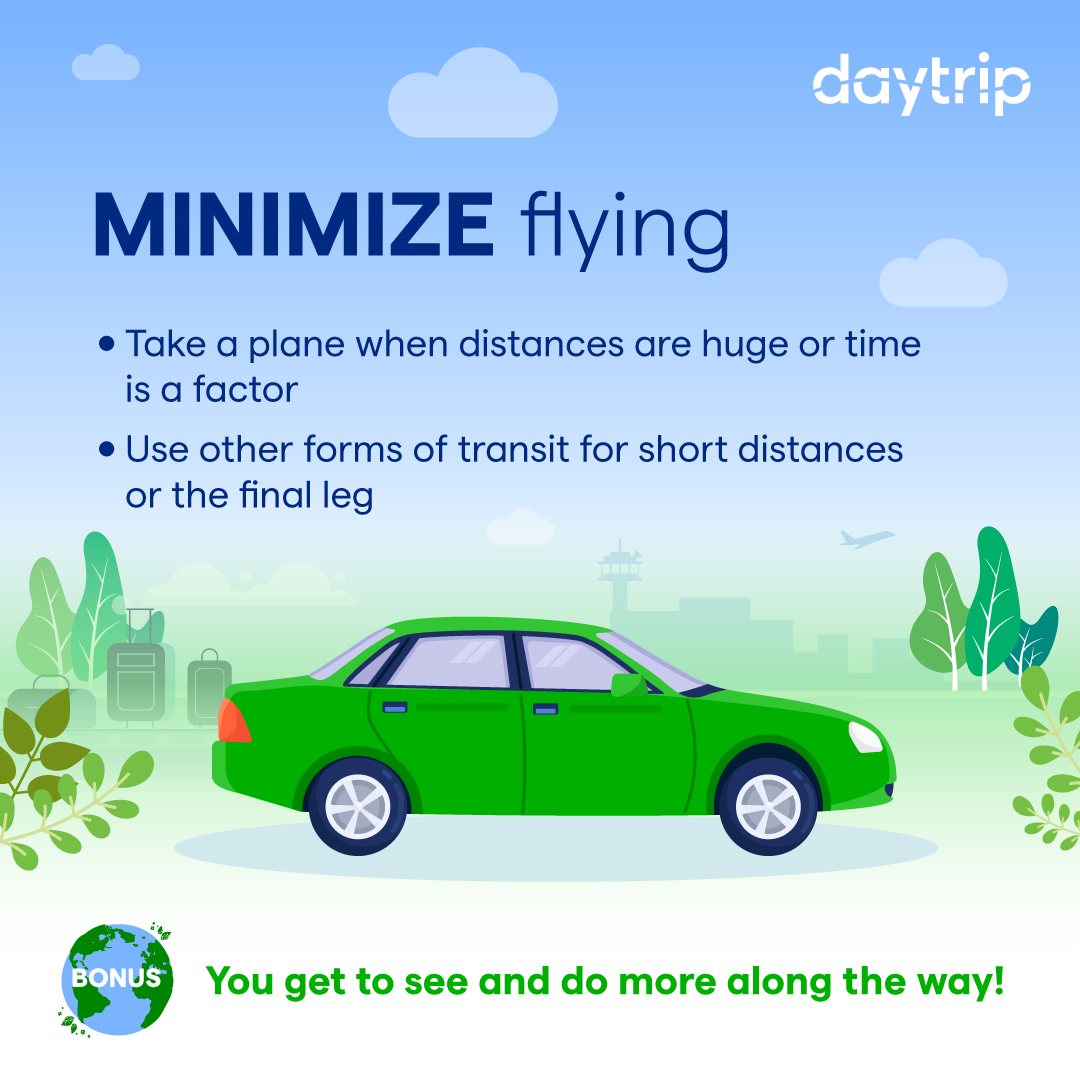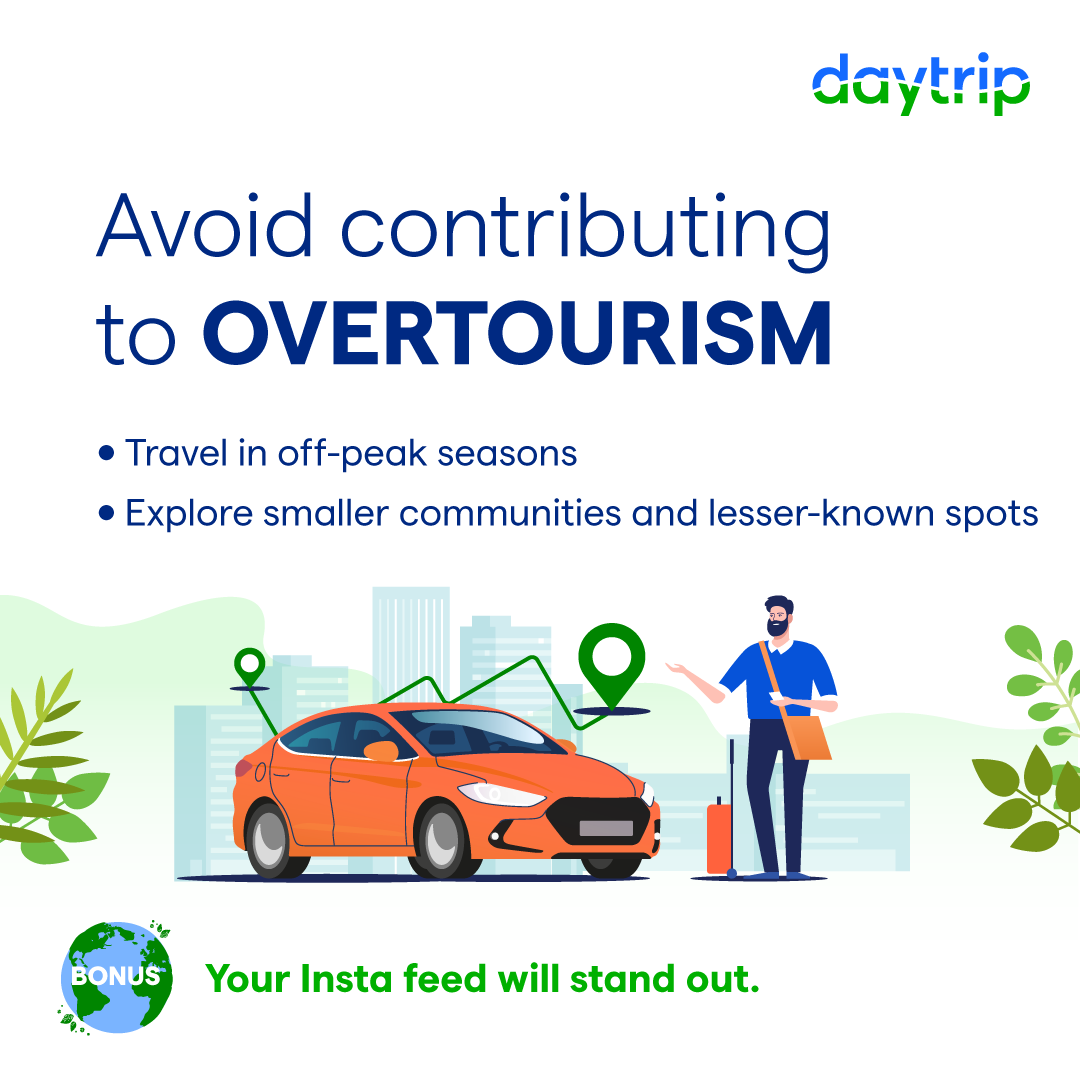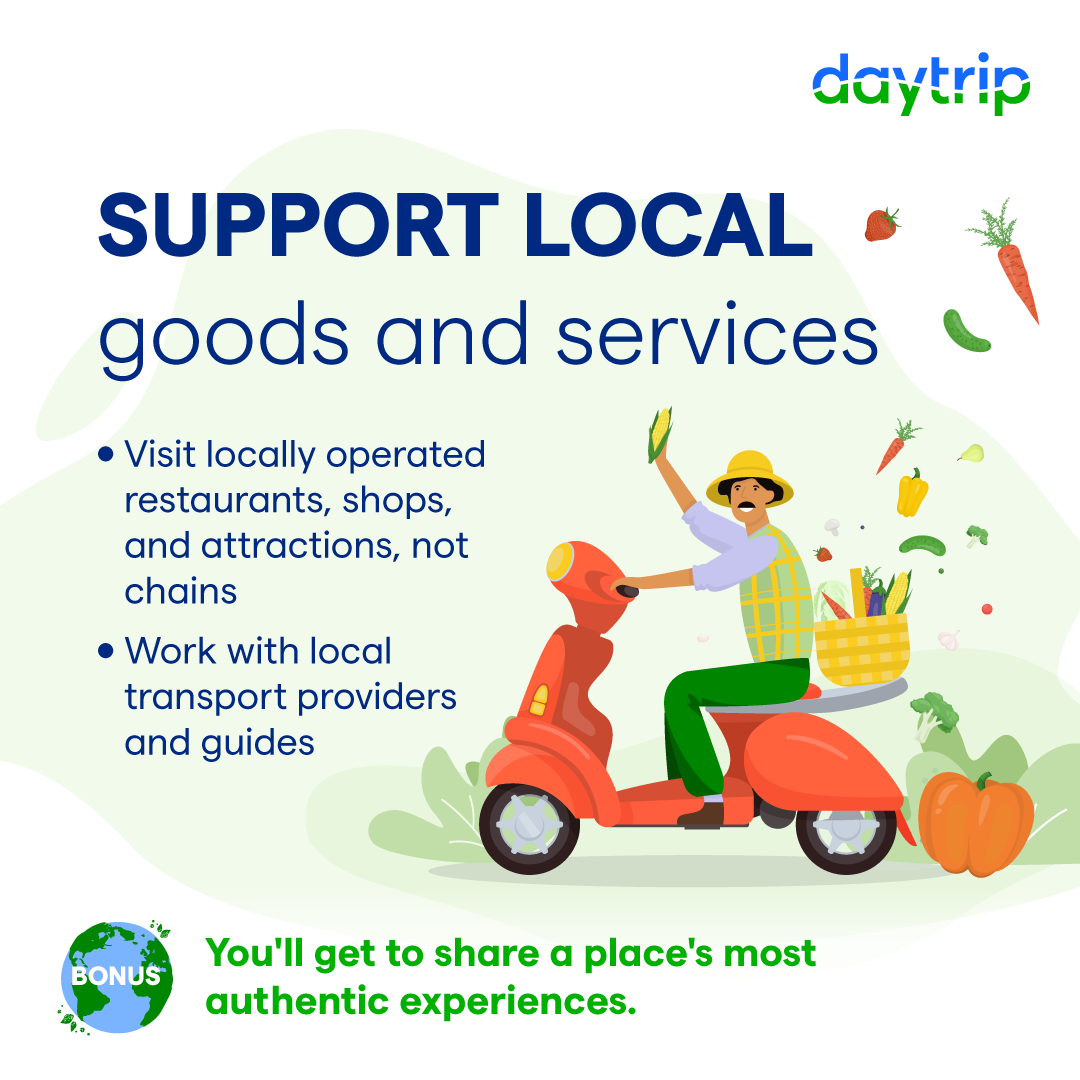How to: Sustainable travel and responsible tourism
April 22 is Earth Day, an opportunity for all of us to think about the roles we all play on the planet we all share. For the travel industry—both individual globetrotters and the services they use to get around and explore the world—this holiday has become an opportunity to directly address questions of sustainable tourism, responsible travel, and much more.
But your Earth Day activities don’t have to involve a hard turn to ecotourism or feeling guilty about climate change: At Daytrip, we believe that being a conscientious traveler can mean minimizing your impact and participating in the sustainable development of communities both large and small. Better yet, our tips for how to travel the world in a friendlier way can also help you make the most of your next vacation or any time you spend away from home!
What does “travel sustainable” mean?
Traveling sustainably, despite being such a short phrase, often loses itself in plenty of fuzzy math and buzzwords, from emissions levels to carbon credits to “green” certificates. That’s why for us, traveling sustainably simply means reducing harm to the places you visit and making travel beneficial for all: visitors, host communities, and the non-human parts around and in between. By being mindful of where you go, how you get there, and what you do when you arrive, individuals, businesses, and thought leaders can join forces to empower communities, conserve nature, and promote cultural connection across the globe. Here’s how.
Minimize flying
Sometimes flying is unavoidable: if you’re crossing an ocean or from one side of a continent to the other, there’s hardly a better way. At the same time, things like low-cost airlines have made it easy to fly too much. If, for example, you live in the US and you’re planning a multi-country European vacation this year, crossing the pond by air is a no-brainer, but you’ll have a choice when it comes to getting from Lisbon to Porto. Using this nifty guide, it’s pretty clear that skipping the plane and covering roughly the same distance by car, bus, or train is much friendlier in terms of sheer amount of CO2 pumped into the atmosphere. Especially when combined with other strategies on this list like traveling in groups, even personalized transport options can become a very green choice.
If that’s not enough to convince you to choose an alternative for the shortest legs of your trips, it’s good to keep in mind the delays, strikes, and often just bad vibes that can make extra time in airports into nightmares. On a more positive note, going from point A to point B by something other than air travel is also an opportunity to soak in more of the world around you. Whether you want the relaxing experience of watching the landscape rush by your window or the flexibility to stop at attractions along your route, hitting the road beats flying the friendly skies every time.
Avoid contributing to overtourism
While much of travel’s ecological impact comes from transportation methods, selecting where and when to go also plays a huge part. Overtourism—more or less too many people arriving all at once—makes major tourist sites unliveable for some locals and causes uncomfortable growing pains even in smaller communities. This isn’t to say that welcoming travelers from abroad is inherently a bad thing; in fact, many places would be worse off without the economic stimulus that foreign visitors bring. What it does mean, though, is that non-locals should consider spreading their travels out in time and space. Part of this can be accomplished by making “travel dupes” part your plans: if you love the vibes in France but have already been to Paris, for example, why not check out other parts of the country like Normandy or the Basque country? Or maybe you’re craving the seaside but hate the crowds of Croatia, so why not choose new, under-the-radar countries with stellar beaches that haven’t yet made it to Instagram? If you’re the first to check these places out, you could be the real trendsetter, while also helping to spread the wealth.
Of course, skipping some of the biggest draws in the world isn’t always doable: sometimes Paris is Paris, Rome is Rome, and there’s no real replacement. You can still visit these iconic locales, but you might consider doing so at off-peak times. Instead of visiting in July or August, for example, you can visit in September or October when the weather is still nice and the biggest floods of foreign travelers are gone. Apart from simply easing the congestion in these capital cities, you’ll get an even more authentic experience wherever you visit since locals will also be finished with their holidays and will be going about their everyday lives.
Optimize your route
Wherever and whenever you decide to go for your next vacation, you’ve still got to plan what you want to do once you arrive. At Daytrip, it’s not just our business to help you get to big-name attractions and semi-hidden stops along the way: helping travelers bond with local people and communities is part of our mission. These sorts of connections are best formed when travelers go exactly where they want to go and arrive with enthusiasm, leaving a good impression on locals and leaving them wanting to help more visitors in the future. This is why we offer easy ways to craft customized itineraries—if you’re a history buff, visit historical places; if you’re a wine lover, visit wine places; if you’re a sun worshipper, there’s no end of the beaches we can take you to.
This human element is an often overlooked part of what makes sustainable tourism sustainable, and it just isn’t possible through traditional tourist means: there’s simply no room for human connection like with the personalized slow travel approach. The tour-heavy approach is simply wasteful on a resource level, too—why book an all-day tour to drive between three stops you don’t care about when you could have saved time and fuel by going to the one you do?
Buy local goods and services
Sometimes the best souvenirs are memories of a nice restaurant, snack, or personality you came across in your travels; luckily this is also one of the easiest places where trip planners can “think global, act local”. Simply put, people and places with roots in the place you’re visiting are the best representatives of that place. This means visiting locally owned restaurants rather than chains, buying handmade goods rather than mass-produced ones, and arranging your travels with locals rather than megacorps.
Daytrip, for example, is a platform that helps you plan your trip and include any stops you might want to visit along your route—the actual transportation is always provided by a real-deal local driver, who’s not only knowledgeable about how to get around but who is also more than happy to share their local perspectives and tips for the area. You can meet some of these drivers through our social media, including Marian, Allyson, and Alfonso!
Travel as a group
This may be the best part: if you’re concerned about making your travels sustainable, traveling in a group usually amplifies all of the approaches above. Not only will more people in one vehicle reduce the per-person carbon footprint, it also means more people will be introduced to lesser-known destinations, more people will spread their tourism dollars, and more people will get to share in the joy of connecting with communities around the globe. So it doesn’t matter whether you’re trying to decide on where to go on a girls trip or the next best place for your family reunion, traveling with more than one person is the ideal way to travel responsibly.
Don’t have a group who can all get away at the same time? No worries—you too can play a part in eco-conscious travel! Even simple methods like shared shuttles or multiperson airport transfer services let you get to where you’re going while spreading out the environmental impact. What’s even better, though, is that these are also the chance to meet new people; and when you’re in a new place, there’s nothing better than a built-in way to make friends and local connections!
Consider local travel
Of course, while traveling is the go-to way to relax for many, schedules, budgets, or climate concerns don’t always make traveling abroad an option. All of the tips above can also apply when you’re considering how to travel responsibly closer to home as well. Daytrip operates in 130+ countries, meaning that whether you’re planning a staycation, have a long weekend, or want to show visiting family and friends the area, you can make the most of your surroundings anywhere.
Additional links
Our aim is to inspire travelers like you whenever you’re out exploring a new corner of the globe. If you want to learn still more about what it means to travel sustainably and the steps that the travel industry is taking, here are a few links you might enjoy.
We hope these tips on how to travel responsibly have helped you think about what it means to be a part of the global community. Here’s to sustainable travel and many happy returns—happy Earth Day!








